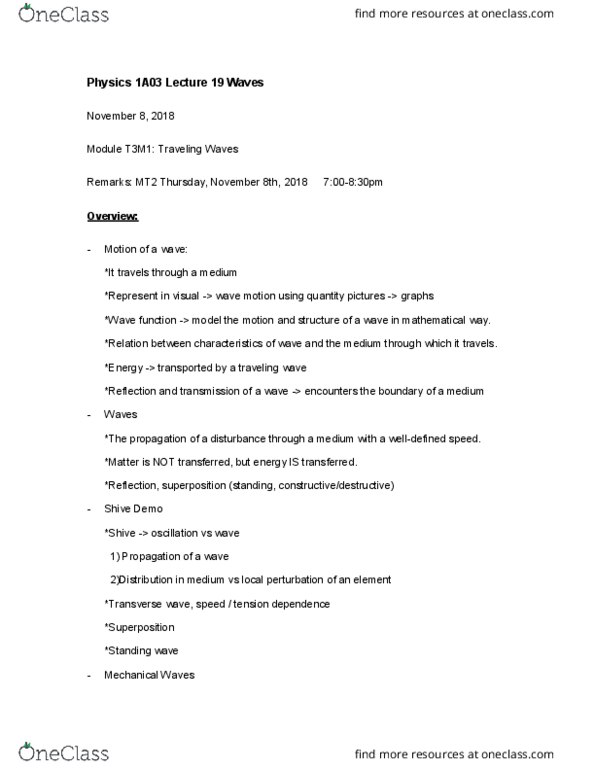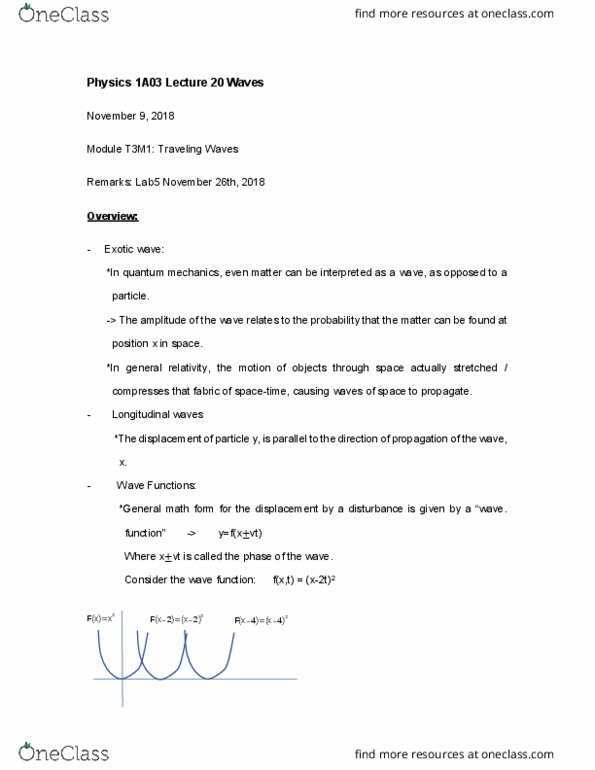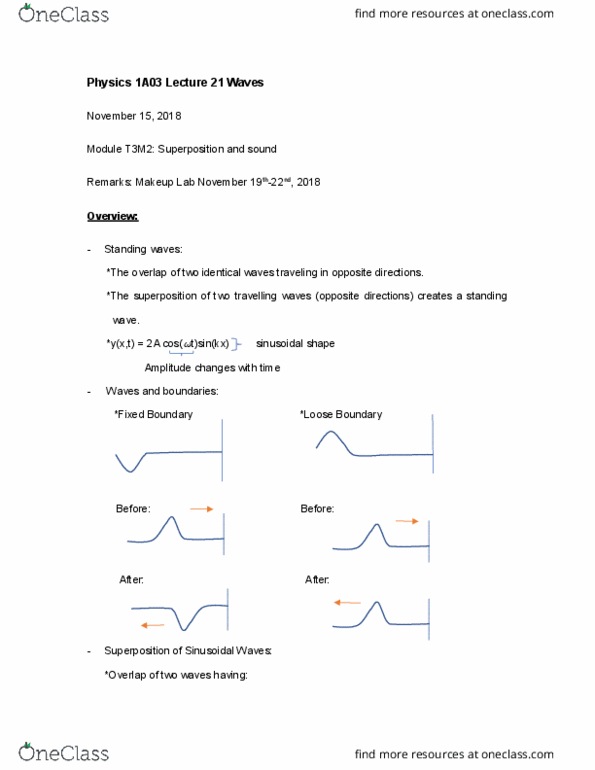PHYSICS 1A03 Lecture Notes - Lecture 20: Wave, Farad, Wind Wave
PHYSICS 1A03 verified notes
20/26View all
Document Summary
*in quantum mechanics, even matter can be interpreted as a wave, as opposed to a particle. > the amplitude of the wave relates to the probability that the matter can be found at position x in space. *in general relativity, the motion of objects through space actually stretched / compresses that fabric of space-time, causing waves of space to propagate. *the displacement of particle y, is parallel to the direction of propagation of the wave, *general math form for the displacement by a disturbance is given by a wave. Where x vt is called the phase of the wave. Periodic sinusoidal waves y(x,t) = a sin(kx t) y(x,t) = a cos(kx t) A = amplitude(m) f=frequency (hz or cycles per second) = wavelength (meters) t= period(seconds) c=speed of propagation. *in order for an oscillation to propagate (travel), there must be interactions within the medium: the properties of the medium dictate the speed of the wave.





